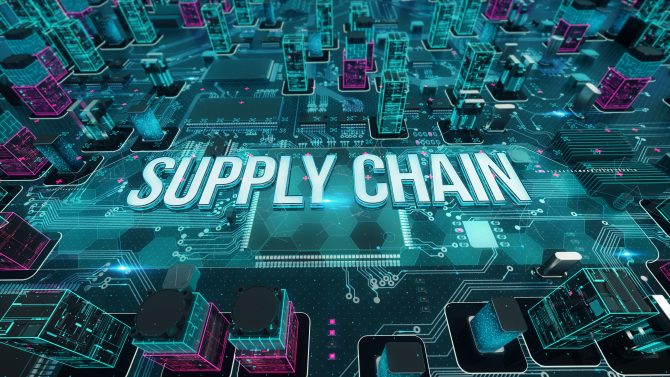
Report indicates shortening lead times, stabilizing prices, lower demand on select components
EP&T Magazine
Electronics Supply Chain supply ChainSupplyframe Commodity IQ data indicates a time of transition: global supply chain issues will persist into H1 2023
New Supplyframe data shows an electronics supply chain that is in transition, with uneven changes for end markets and components. But, while electronic component availability is improving and prices are stabilizing across many categories, Supplyframe Commodity IQ indicates global supply chain issues, extended lead times, geopolitical uncertainty, and elevated logistics and labor costs will remain problematic for the electronics ecosystem and specific end markets into the first half of 2023.
“The electronic component supply chain is improving, but slowly and unevenly,” said Supplyframe CEO and founder Steve Flagg. “The multi-tier electronics supply chain exists within a complicated and volatile environment in which ever-evolving, unforeseen events continue to impact capacity, costs, lead times, and other considerations. Constraints and shortages are not over. And a rebalancing of inventories and component market corrections is in play.”
Memory prices are dropping
Decreasing lead times are a bright spot. Supplyframe forecasts 52% of all electronic component lead time dimensions to decline or stabilize in the third quarter. That’s a significant improvement from the second quarter, when 80% of lead times rose.
Lead times of ceramic capacitors improved markedly quarter-on-quarter, and electrolytic capacitor availability is on track to stabilize in the first quarter of 2023. Printed circuit boards lead times are poised to decline by the end of the year. And NAND flash availability is improving, positively impacting the lead times of solid-state drives (SSDs).

Digital city, diversity of business, technology and internet concept
Commodity IQ analysis indicates that less than half of all electronic component pricing dimensions for direct commodities in the third quarter will increase, down from 74% in the second quarter.
Memory devices are in price equalization mode, with decreases for at-volume, contracted purchases. Blended DRAM average selling prices are on the decline.
“As things become more opportunistic, now is the time for manufacturers to build resiliency,” said Flagg. “To do that, manufacturers of devices that rely on electronics components need to use new forms of intelligence to inform the decisions that they make during new product design that could affect their downstream product lifecycles.”
Demand declining in some areas – robust in others
Demand activity across active and passive components and memory and storage devices declined from the first quarter to the second quarter, except for programmable logic devices, which experienced a 9% increase, according to the Commodity IQ Demand Index.
Softening consumer demand, particularly in China, and economic concerns are the main culprits, with quarter-on-quarter sourcing actions contracting by 7% and by 11% from May to June. Capacitor and resistor demand shrunk by 12%, driven partly by order push-outs and cancellations as customers waited for long-lead-time semiconductors. Other passive components suffered similar fates, contracting by single-digit percentages. Global demand was down 11% month-on-month in June versus historical 4% increases, with Asia-Pacific and the EMEA region declining by 11% and 14%, respectively.
Meanwhile, overall memory demand dipped 6% from the first to the second quarter. It’s forecast to decrease again in the third quarter by 2%, according to Commodity IQ analytics. Server DRAM demand is robust, but contracting demand in PCs, laptops, and smartphones are impacting DRAM pricing. Supplyframe has identified evidence of PC OEMs reducing their H2 DRAM at-volume forecasts by up to 30% or more beginning in the second quarter. These oversupply indications for consumer devices are profound and have led component suppliers to limit their production and decrease their prices. Top memory suppliers SK hynix and Micron are reassessing capacity investments for 2023, and leading foundry TSMC is reducing its expansion spending by as much as 9%.
“Sharp declines in PC and smartphone component demand are concerning, but we don’t expect an oversupply of semiconductors, as demand in such sectors as automotive, industrial and medical remains robust,” said Richard Barnett, chief marketing officer at Supplyframe.
